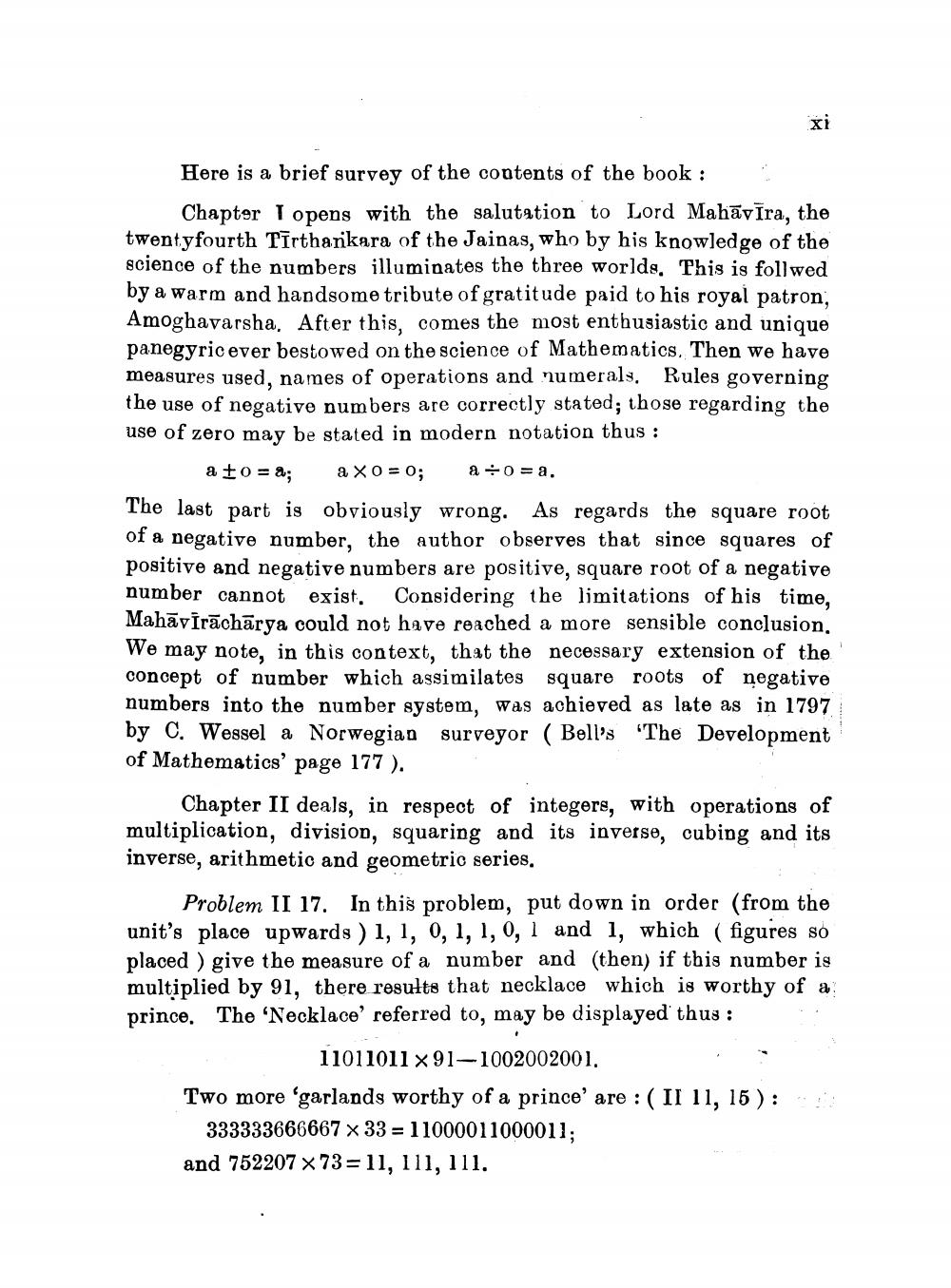________________
xi
Here is a brief survey of the contents of the book :
Chapter I opens with the salutation to Lord Mahāvīra, the twentyfourth Tirthankara of the Jainas, who by his knowledge of the science of the numbers illuminates the three worlds. This is follwed by a warm and handsome tribute of gratitude paid to his royal patron, Amoghavarsha. After this, comes the most enthusiastic and unique panegyric ever bestowed on the science of Mathematics. Then we have measures used, names of operations and numerals. Rules governing the use of negative numbers are correctly stated; those regarding the use of zero may be stated in modern notation thus:
a±0 = a;
a x0 = 0; a÷0=a.
The last part is obviously wrong. As regards the square root of a negative number, the author observes that since squares of positive and negative numbers are positive, square root of a negative number cannot exist. Considering the limitations of his time, Mahaviracharya could not have reached a more sensible conclusion. We may note, in this context, that the necessary extension of the concept of number which assimilates square roots of negative numbers into the number system, was achieved as late as in 1797 by C. Wessel a Norwegian surveyor (Bell's "The Development of Mathematics' page 177).
Chapter II deals, in respect of integers, with operations of multiplication, division, squaring and its inverse, cubing and its inverse, arithmetic and geometric series.
Problem II 17. In this problem, put down in order (from the unit's place upwards) 1, 1, 0, 1, 1, 0, 1 and 1, which (figures so placed) give the measure of a number and (then) if this number is multiplied by 91, there results that necklace which is worthy of a prince. The 'Necklace' referred to, may be displayed thus:
11011011 × 91-1002002001.
Two more 'garlands worthy of a prince' are: (II 11, 15): 333333666667 x 33 = 11000011000011;
and 752207 × 73=11, 111, 111.




